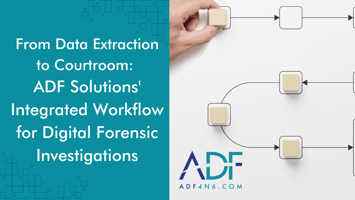In an era where gaming consoles have evolved into powerful entertainment and social hubs, they've...
Investigating Chromebooks to Speed Your Digital Investigations
ADF Solutions has opened the door to exploring Chromebooks in mobile forensics. With our initial version, you can conduct logical acquisitions, screencasts, and even record specific applications. This how-to video will walk you through the process, helping you leverage ADF Solutions to investigate Chromebooks effectively.
Before you begin:
- Ensure accessibility: You'll need physical access to the Chromebook.
- Adjust Chromebook settings: Some changes are necessary before proceeding.
Requirements:
- Linux environment: Enable it in the Chromebook settings.
- Android Debug Bridge (ADB): Activate it. This change is permanent, turning on ADB makes it accessible to all Chromebook accounts. Disabling it triggers a factory reset (Powerwash).
Connecting to your Chromebook:
You have three options, with the direct connection being the recommended method:
- Direct connection (recommended): This utilizes a peer-to-peer Ethernet cable connection. A USB-to-Ethernet adapter might be required.
- Wired connection: Both the Chromebook and your Windows machine connect to a router using Ethernet cables.
- Wireless connection: Both devices connect to the same Wi-Fi network.
Recommended Method: Direct Connection (Step-by-Step):
- Connect the ChromeOS device and the computer running the ADF software via an ethernet cable.
- On the ChromeOS device, select the time at the bottom right.
- Select Settings.
- Using the left-hand side menu, select “Network”.
- Within the "Network" section, select the connected network.
- Scroll down to expand the “Network” section.
- Switch off “Configure IP address automatically”.
- Assign a static IP address. The IP addresses must start with “169.254”, but the rest of the address (.x.x) can be anything between 0 - 255. For example, “169.254.1.1”.
- Assign the Subnet mask value to “255.255.0.0”.
- Ensure the Gateway values are left blank.
- The ChromeOS device will now be discovered automatically by the ADF software
Utilizing ADF Solutions:
- Acquire first, scan later: Go to "Acquire" to save a logical acquisition in the default location.
- Cast, Acquire, and scan together: Use the "Scan Screen" with a mobile profile for simultaneous casting, acquisition, and scanning.
- Screencast only: Navigate to the "Screencasting" menu, choose the Chromebook as the source, and proceed. You can further opt for acquisition or screen captures upon completion.
ADF is actively developing this feature and welcomes your feedback and suggestions.
By following these steps and leveraging the functionalities of ADF Solutions, you can effectively investigate Chromebooks and gather valuable evidence for your investigations.






